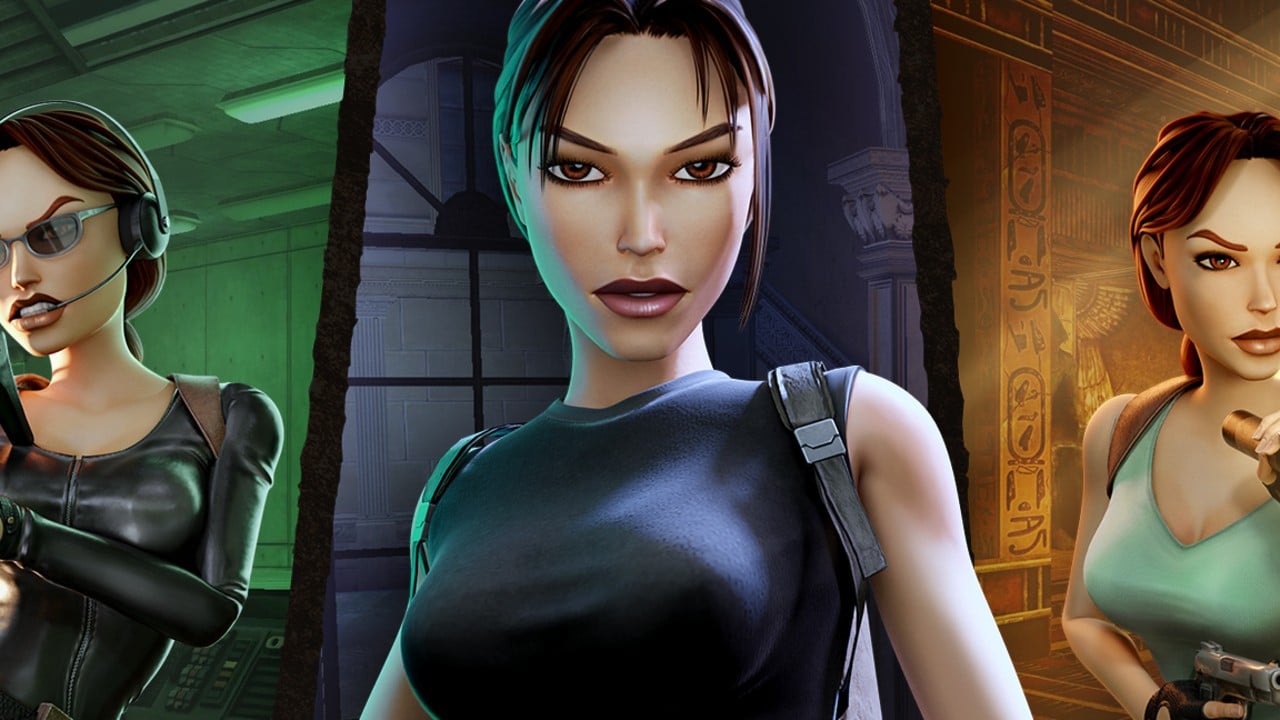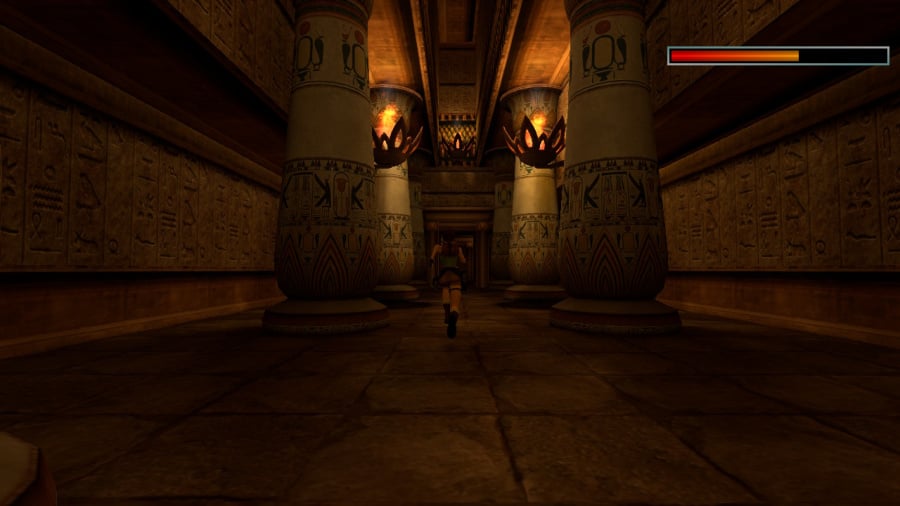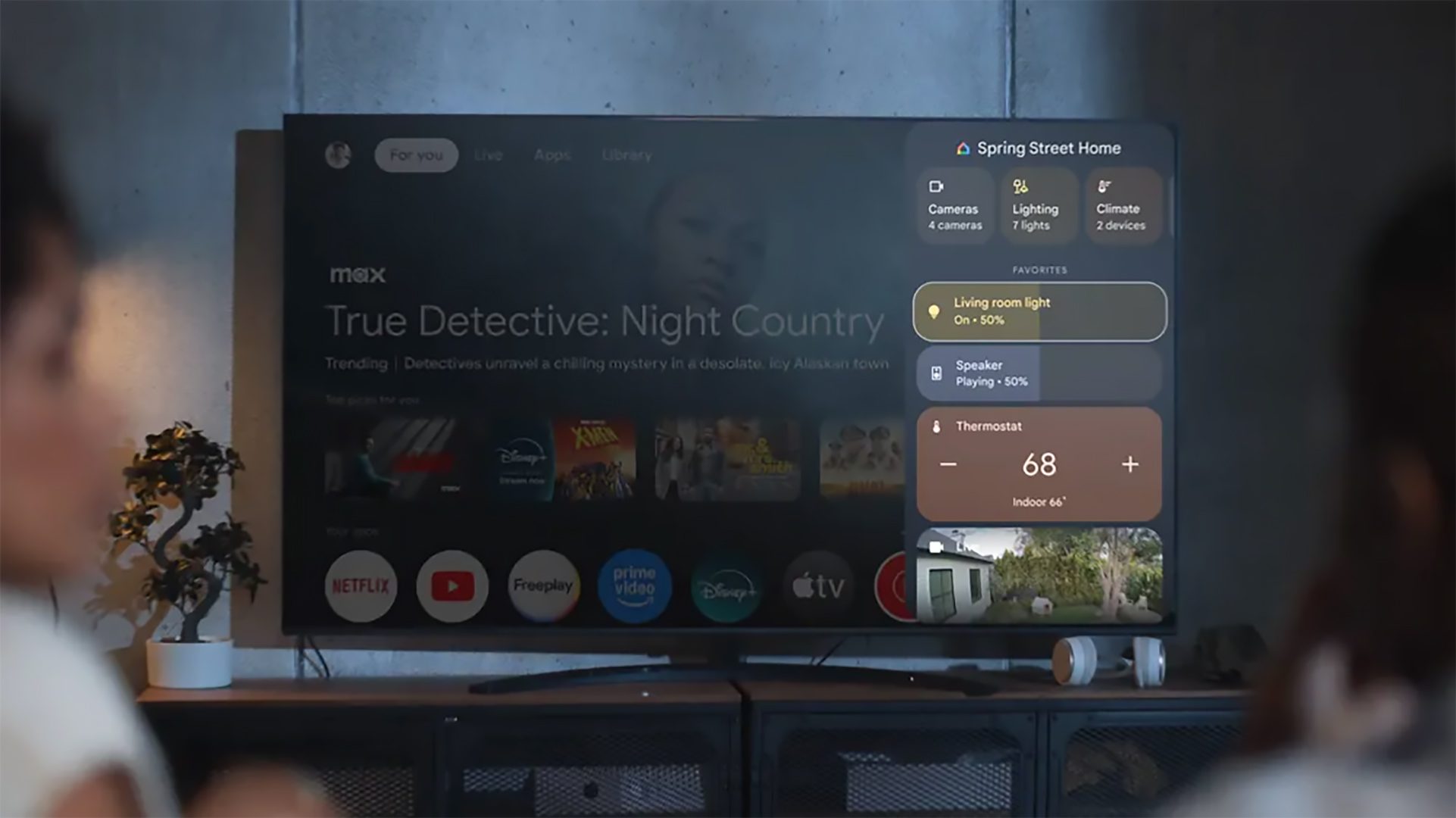

It seems like an absurd notion these days, but after Tomb Raider made its debut in 1996, developer Core Design pumped out six mainline entries over the next eight years – six. It’s true that teams were able to turn projects around much more quickly in those days, as evidenced by franchises such as Resident Evil and Final Fantasy, but it was also a clear indication of just how popular Lara Croft had become, and how much publisher Eidos Interactive wanted to milk the series to within an inch of its life.
The story goes that Core Design had grown weary of Tomb Raider by the time it commenced work on the fourth entry, The Last Revelation. Though keen to wean off Lara Croft and be done with the series, the team was ordered by Eidos to press on with even more Tomb Raider games. So while one group of devs reworked scrapped ideas from The Last Revelation to produce Tomb Raider: Chronicles, another moved development to the PS2 and began work on The Angel of Darkness.

It’s clear, however, that Core Design’s fatigue had ultimately resulted in two lacklustre experiences. Chronicles, while passable, lacks cohesion and feels like the video game equivalent of a ‘deleted scenes’ special feature. Meanwhile, The Angel of Darkness is the result of a desperate attempt to inject some life into Tomb Raider which wound up being a severe overcorrection, buckling under the weight of ambition and mismanagement. It was credited as being the game that almost killed Tomb Raider, and now, thanks to Aspyr, it’s back to rear its ugly head on the Nintendo Switch in Tomb Raider IV-VI Remastered.
This second collection benefits from the same treatment Aspyr lavished upon its previous remastered trilogy. The graphics have been given a significant overhaul across all three games, with the option to revert to the original visuals at the press of a button. This time, however, the OG visuals now also come with an optional boost in frame rate; an upgrade that may prove titillating for series veterans, and one that we hope is retroactively added to the first collection.
This is particularly welcome since the remastered graphics don’t look particularly good at times. We mentioned in our review of I-III that the visual overhaul resulted in some scenes looking overly dark, but it’s even more egregious here. Yes, the shinier graphics are objectively “better” than the blocky character models and environments from the PS1 days, but there’s something quite charming and ethereal about Core Design’s original vision that the remastered release simply can’t replicate.

Which option you go for is likely dependent on how familiar you are with the original games. Newcomers will probably gravitate toward the remastered visuals, but having the original vision firmly intact with the added benefit of 60fps performance is undeniably appealing for those looking to recapture that late ‘90s nostalgia.
This goes for the gameplay too. Little has changed here from the first trilogy’s remaster, with Apsyr offering the original ‘tank’ controls alongside a new modernised setup. The latter is functional and can help in certain situations, but the tank controls allow for easier execution of moves like the side jump. Much like the visuals, the modern controls are primarily there for newcomers, but we’d probably recommend switching over to the tank setup for a more authentic take on the original games.
Looking at the entries themselves, the collection starts off strong with The Last Revelation. Taking place almost entirely within Egypt, it’s a rollicking adventure that feels like the quintessential Tomb Raider experience. It gives us our best insight yet at the character of Lara Croft, putting us in the shoes of a younger, less experienced adventurer in the opening segment, before presenting us with some of the most devious puzzles yet as we explore the tombs and ruins of Karnak. Had the series ended here as Core Design originally intended, it would have gone out on a major high note.

Alas, Tomb Raider: Chronicles follows up with a disjointed look at some of Lara Croft’s most dangerous expeditions in what can only be described as a sort of anthology. You start exploring the streets of Rome and face off against literal gladiators in a fun, albeit uninspired opening adventure.
From there, you’re infiltrating Russian submarines, facing off against ghosts as a teenage Lara Croft, and sneaking through a New York high-rise in black latex; a blatant nod toward The Matrix which, at the time, had been released just one year prior. It’s a tolerable entry that series fans will enjoy, but Chronicles suffers from lacklustre level design and awful storytelling.
Finally, The Angel of Darkness is about as bad as it was back in 2003. Despite some minor improvements to the controls and performance, along with some reinstated cut content, this remains the most bafflingly misguided entry in the entire series. Swapping out lush, tropical locales for the drab, rainy streets of Paris, it adds in an awful new stealth mechanic in which Lara can sneak and poke her head around corners. Not only that, returning abilities feel slow and unresponsive compared to the earlier entries.

You’ve also got more open-ended sections (separated by infuriatingly frequent load screens) in which you can approach NPCs and engage in shallow conversations with added dialogue choices, and frankly, the tonal shift is incredibly jarring.
Although we’d never claim that The Angel of Darkness is a particularly fun experience, it is nevertheless a fascinating game to revisit. It is, in essence, a Tomb Raider game made by a studio that no longer wanted to make Tomb Raider games. Its influences, including Metal Gear Solid and even the works of film director David Fincher, are plain to see in hindsight, but it’s just a shame that none of it resulted in a game worth recommending.
The release of Tomb Raider IV-VI Remastered reminds us of Capcom’s Mega Man Legacy Collection 2. Both contain games that, at the time of their original release, represented franchises in dire need of a break, and probably shouldn’t have been made in the first place. But when played more than two decades later with more modern conveniences and smoother visuals, it’s easier to cast aside our old grievances and appreciate the intention behind their creation.

That said, if all you’re bothered about is having a good time, then you might be best off either just playing through The Last Revelation, or even going one step further and sticking to the first remastered trilogy.
One final thing to note is that we encountered a couple of instances in which the game would freeze after waking the Switch up from Sleep Mode. This happened once during a cutscene in which the visuals froze but the audio kept playing, and once during gameplay that ultimately resulted in a full reset of the game. Ensure you make liberal use of the manual save function until this particular issue is resolved.
Conclusion
Tomb Raider IV-VI Remastered is an odd release in that only one of its three games can be considered a genuine classic. Yet despite this, it’s still a collection we’d tentatively recommend checking out if only to appreciate how such an iconic video game series was almost completely derailed. The remastered visual upgrades – particularly in the fourth and fifth entries – don’t always work, but the addition of 60fps performance alongside the retro aesthetics is very welcome indeed. If you’re a fan of Tomb Raider or enjoy revisiting flawed curios from days gone by, this might be worth looking into, but this isn’t essential like Aspyr’s previous Tomb Raider collection.

It seems like an absurd notion these days, but after Tomb Raider made its debut in 1996, developer Core Design pumped out six mainline entries over the next eight years – six. It’s true that teams were able to turn projects around much more quickly in those days, as evidenced by franchises such as Resident Evil and Final Fantasy, but it was also a clear indication of just how popular Lara Croft had become, and how much publisher Eidos Interactive wanted to milk the series to within an inch of its life.
The story goes that Core Design had grown weary of Tomb Raider by the time it commenced work on the fourth entry, The Last Revelation. Though keen to wean off Lara Croft and be done with the series, the team was ordered by Eidos to press on with even more Tomb Raider games. So while one group of devs reworked scrapped ideas from The Last Revelation to produce Tomb Raider: Chronicles, another moved development to the PS2 and began work on The Angel of Darkness.

It’s clear, however, that Core Design’s fatigue had ultimately resulted in two lacklustre experiences. Chronicles, while passable, lacks cohesion and feels like the video game equivalent of a ‘deleted scenes’ special feature. Meanwhile, The Angel of Darkness is the result of a desperate attempt to inject some life into Tomb Raider which wound up being a severe overcorrection, buckling under the weight of ambition and mismanagement. It was credited as being the game that almost killed Tomb Raider, and now, thanks to Aspyr, it’s back to rear its ugly head on the Nintendo Switch in Tomb Raider IV-VI Remastered.
This second collection benefits from the same treatment Aspyr lavished upon its previous remastered trilogy. The graphics have been given a significant overhaul across all three games, with the option to revert to the original visuals at the press of a button. This time, however, the OG visuals now also come with an optional boost in frame rate; an upgrade that may prove titillating for series veterans, and one that we hope is retroactively added to the first collection.
This is particularly welcome since the remastered graphics don’t look particularly good at times. We mentioned in our review of I-III that the visual overhaul resulted in some scenes looking overly dark, but it's even more egregious here. Yes, the shinier graphics are objectively “better” than the blocky character models and environments from the PS1 days, but there’s something quite charming and ethereal about Core Design’s original vision that the remastered release simply can’t replicate.

Which option you go for is likely dependent on how familiar you are with the original games. Newcomers will probably gravitate toward the remastered visuals, but having the original vision firmly intact with the added benefit of 60fps performance is undeniably appealing for those looking to recapture that late ‘90s nostalgia.
This goes for the gameplay too. Little has changed here from the first trilogy's remaster, with Apsyr offering the original ‘tank’ controls alongside a new modernised setup. The latter is functional and can help in certain situations, but the tank controls allow for easier execution of moves like the side jump. Much like the visuals, the modern controls are primarily there for newcomers, but we’d probably recommend switching over to the tank setup for a more authentic take on the original games.
Looking at the entries themselves, the collection starts off strong with The Last Revelation. Taking place almost entirely within Egypt, it’s a rollicking adventure that feels like the quintessential Tomb Raider experience. It gives us our best insight yet at the character of Lara Croft, putting us in the shoes of a younger, less experienced adventurer in the opening segment, before presenting us with some of the most devious puzzles yet as we explore the tombs and ruins of Karnak. Had the series ended here as Core Design originally intended, it would have gone out on a major high note.

Alas, Tomb Raider: Chronicles follows up with a disjointed look at some of Lara Croft’s most dangerous expeditions in what can only be described as a sort of anthology. You start exploring the streets of Rome and face off against literal gladiators in a fun, albeit uninspired opening adventure.
From there, you’re infiltrating Russian submarines, facing off against ghosts as a teenage Lara Croft, and sneaking through a New York high-rise in black latex; a blatant nod toward The Matrix which, at the time, had been released just one year prior. It’s a tolerable entry that series fans will enjoy, but Chronicles suffers from lacklustre level design and awful storytelling.
Finally, The Angel of Darkness is about as bad as it was back in 2003. Despite some minor improvements to the controls and performance, along with some reinstated cut content, this remains the most bafflingly misguided entry in the entire series. Swapping out lush, tropical locales for the drab, rainy streets of Paris, it adds in an awful new stealth mechanic in which Lara can sneak and poke her head around corners. Not only that, returning abilities feel slow and unresponsive compared to the earlier entries.

You’ve also got more open-ended sections (separated by infuriatingly frequent load screens) in which you can approach NPCs and engage in shallow conversations with added dialogue choices, and frankly, the tonal shift is incredibly jarring.
Although we’d never claim that The Angel of Darkness is a particularly fun experience, it is nevertheless a fascinating game to revisit. It is, in essence, a Tomb Raider game made by a studio that no longer wanted to make Tomb Raider games. Its influences, including Metal Gear Solid and even the works of film director David Fincher, are plain to see in hindsight, but it’s just a shame that none of it resulted in a game worth recommending.
The release of Tomb Raider IV-VI Remastered reminds us of Capcom’s Mega Man Legacy Collection 2. Both contain games that, at the time of their original release, represented franchises in dire need of a break, and probably shouldn’t have been made in the first place. But when played more than two decades later with more modern conveniences and smoother visuals, it’s easier to cast aside our old grievances and appreciate the intention behind their creation.

That said, if all you’re bothered about is having a good time, then you might be best off either just playing through The Last Revelation, or even going one step further and sticking to the first remastered trilogy.
One final thing to note is that we encountered a couple of instances in which the game would freeze after waking the Switch up from Sleep Mode. This happened once during a cutscene in which the visuals froze but the audio kept playing, and once during gameplay that ultimately resulted in a full reset of the game. Ensure you make liberal use of the manual save function until this particular issue is resolved.
Conclusion
Tomb Raider IV-VI Remastered is an odd release in that only one of its three games can be considered a genuine classic. Yet despite this, it's still a collection we'd tentatively recommend checking out if only to appreciate how such an iconic video game series was almost completely derailed. The remastered visual upgrades – particularly in the fourth and fifth entries – don't always work, but the addition of 60fps performance alongside the retro aesthetics is very welcome indeed. If you're a fan of Tomb Raider or enjoy revisiting flawed curios from days gone by, this might be worth looking into, but this isn't essential like Aspyr's previous Tomb Raider collection.






